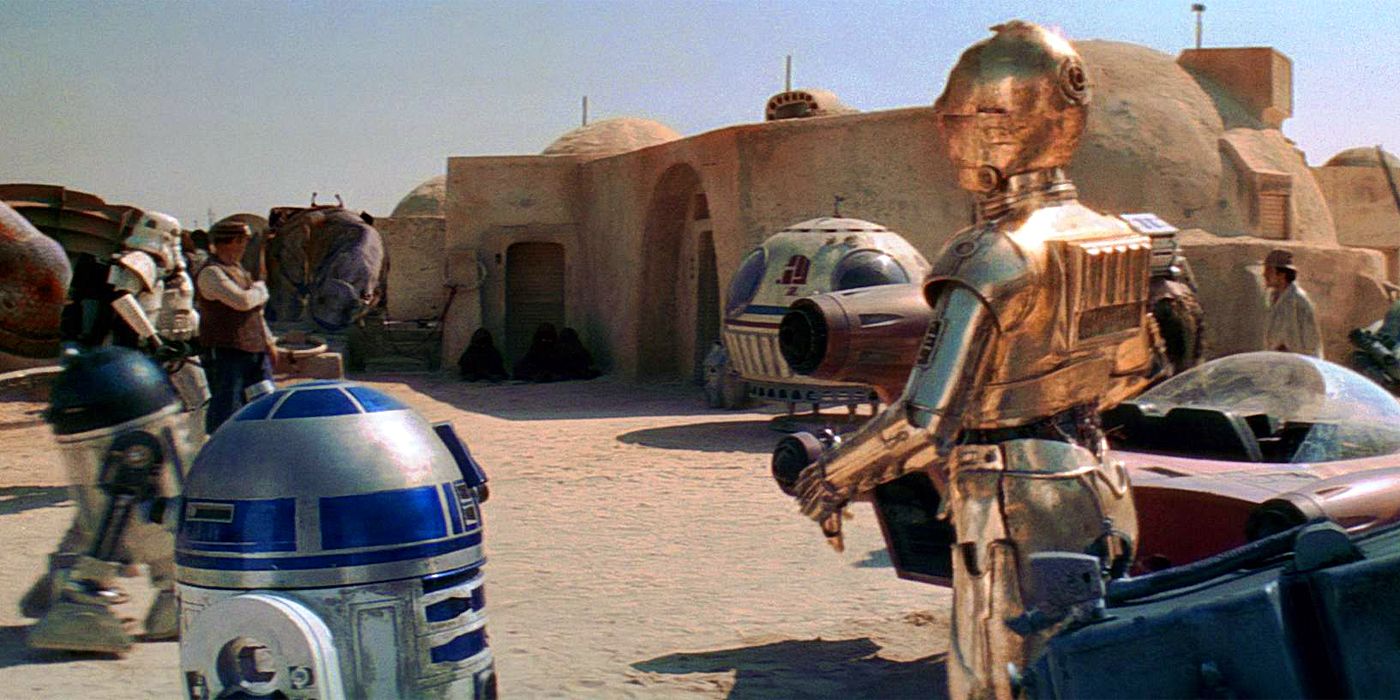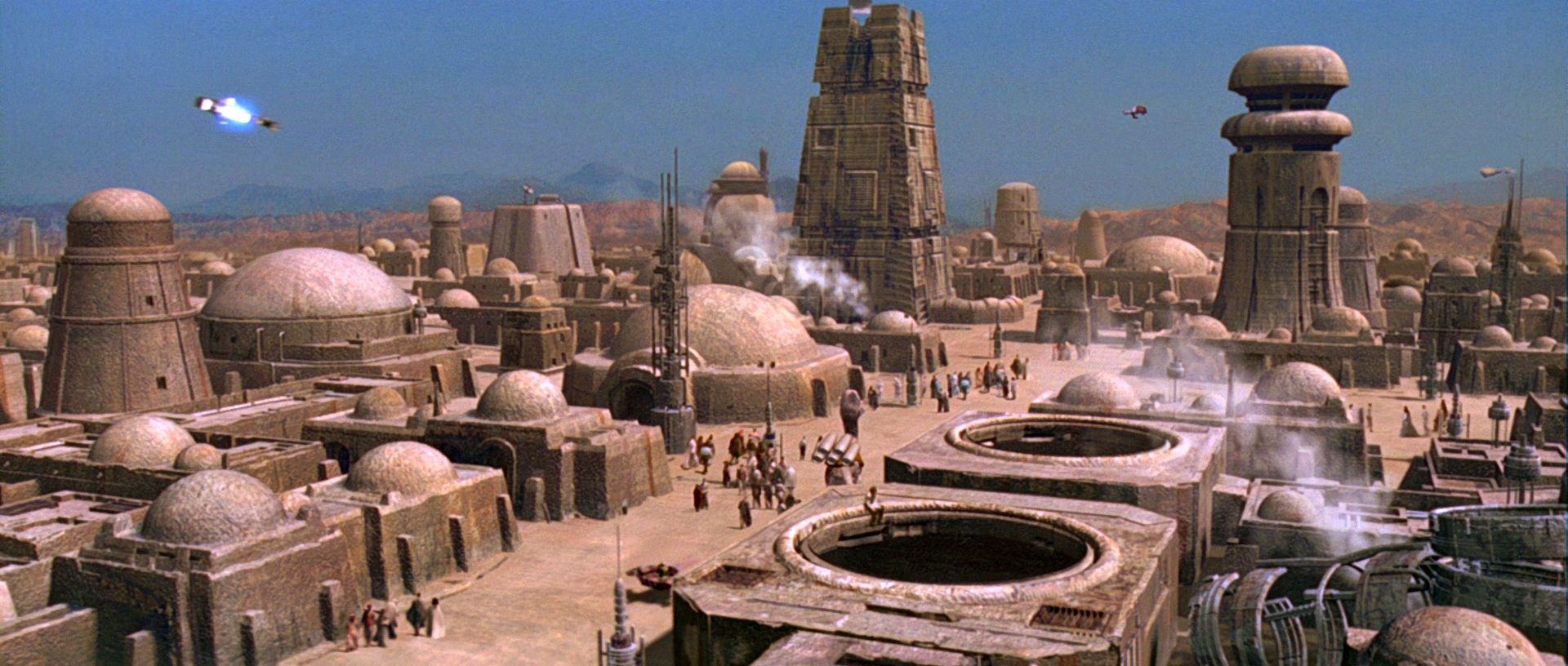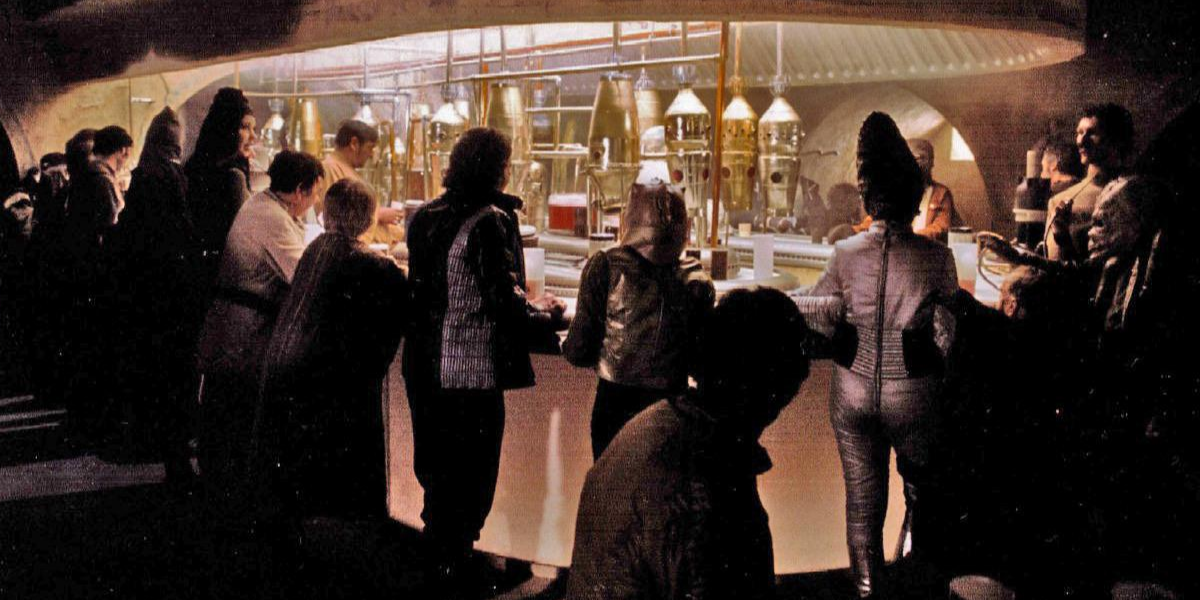When you step back and appreciate the scope and detail, there is a jaw-dropping number of stories in Star Wars that go far beyond the actions of the core cast. Not every story is about intergalactic politics, star-spanning wars, or epic battle between good and evil. Case in point: Mos Eisley cantina has a whole history within a galaxy far, far away that rarely gets talked about.
The cantina was the site of the fated meeting where Luke Skywalker and Obi-Wan first came across Han Solo and Chewbacca. Entering the cantina started the background plot that would only thicken over time after R2D2 and C3PO were banished from the bar. Saying they don't serve droids, the policy of the establishment proved to be an odd bit of discrimination reinforced by a background detail fans couldn't appreciate until The Empire Strikes Back.
In the background of the scene, behind the bar, there are several drink dispensers lined with what would have appeared to the first audiences of A New Hope as simply some kind of sci-fi fountain. But when the sequel did come out, keen-eyed fans had the opportunity to notice that the fountains in Mos Eisley weren't simple fountains; they were actually the heads of IG units.
Lining the bar of the Mos Eisley cantina was undoubtedly the heads of several IG series droids. Built as assassins, the IG series proved to be capable and deadly hunters, even if very little of IG-88 was seen beyond his introduction alongside the other bounty hunters in The Empire Strikes Back. The detail would hint not only at furtherance of the cantina's discrimination against droids but also at some deeper story in which they managed to disassemble some of the deadliest droids on the market.
The Mandalorian proves just how deadly such droids could be with the introduction of IG-11. Appearing as a bounty hunter determined to capture The Child, IG-11 waded through rounds of blaster bolts without taking damage and slaughtered entire squadrons of men with precision and without hesitation. It remains a mystery why the owners of the Cantina were so hellbent on getting their hands on such immensely difficult to obtain items -- and it's one fans may never find out because The Mandalorian also showed the establishment had changed its droid policy.
Far from discriminating against droids any longer, by the time Mando visits the cantina decades after A New Hope took place the tavern is actually ran by droids. Various supervisor droids tend the bar, and Mando even asks one of the bartending droids for information. Mando's own prejudices against droids receive further attention elsewhere in the series and are ultimately tested in the finale when his life depends on trusting the reprogrammed IG-11.
And yet, beyond the initial utterance of the policy against droids in A New Hope, almost none of this received explicit attention in the series. The story that unfolds on screen, and the further stories hinted at that take place off-screen, is all part of a masterfully crafted universe with imaginative design.
Cynics and skeptics would be quick to point out that the prop designers for A New Hope likely did not anticipate that the drink dispensers from the cantina set would be repurposed for an assassin droid in a sequel they couldn't expect. The prop itself consists of parts from a Rolls-Royce Derwent jet engine, and it's unlikely they expected the film to become the source of such obsessive attention that fans would analyze every single scene. But part of the beauty of the Star Wars universe is its invitation toward such imagination, and when fans of the early films become creators of later projects like The Mandalorian they can turn such theory-crafting into the substance of truly great background stories.



